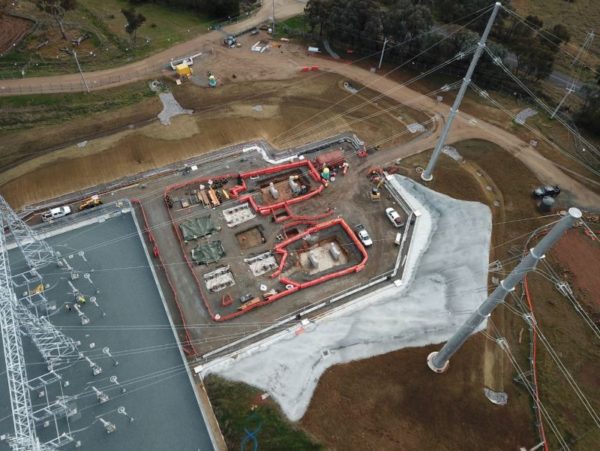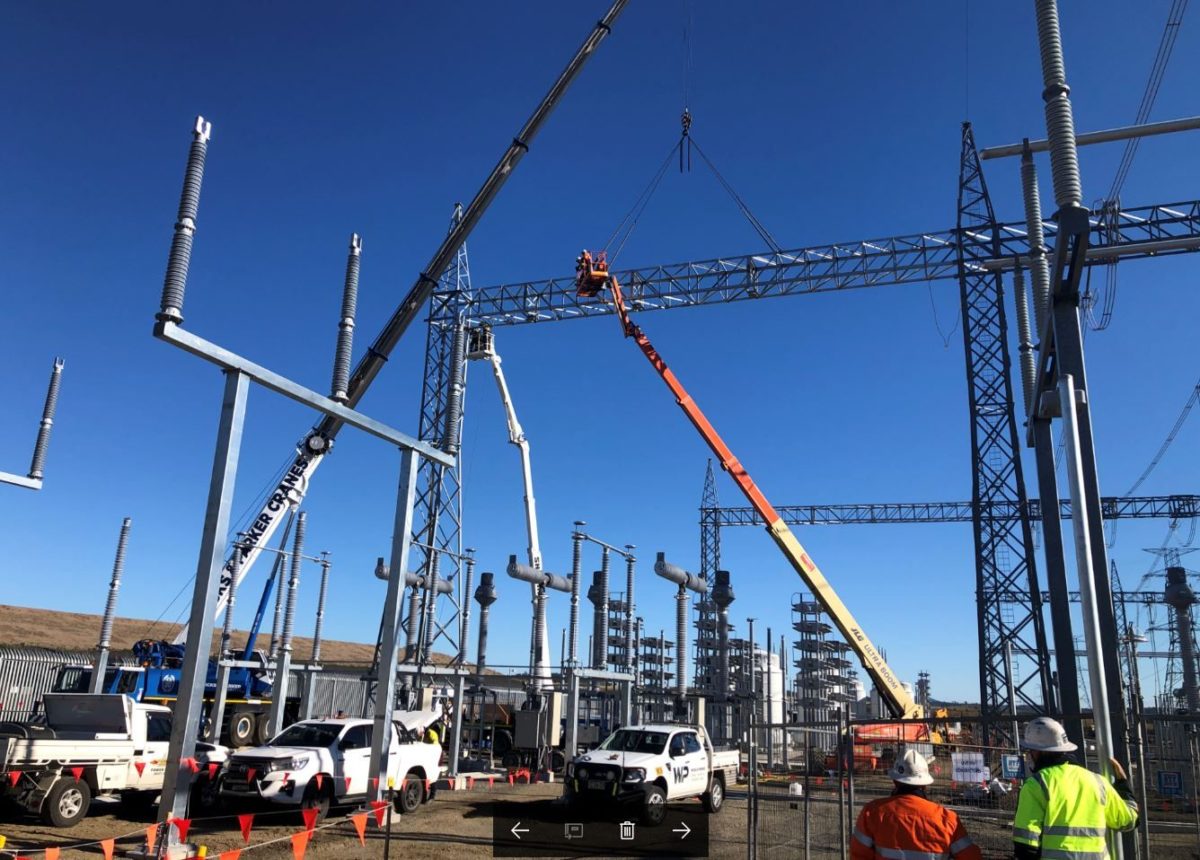Transgrid has confirmed its Victoria-New South Wales Interconnector (VNI) upgrade project has passed the halfway mark while the $230 million Queensland-NSW Interconnector (QNI) upgrade is 80% complete, with works now moving from the civil phase to the electrical phase.
Both interconnection upgrades have been identified as priority projects by the Australian Energy Market Operator (AEMO) as part of its Integrated System Plan and will increase the capacity for the bidirectional flow of energy across state lines and help ease the bottleneck of new wind, solar and storage projects waiting to enter the grid.
Transgrid executive manager of works delivery Craig Stallan said the VNI upgrade project, which will increase transfer capacity into NSW from Victoria by 170 MW at times of high demand, is now over 55% complete with the network operator saying it remains on track for completion this year.
Stallan said the bulk of civil works is completed and the first stage of electrical works of the VNI upgrade project will commence next month, with the balance of civil works to be finished in August.
“We are very pleased with the progress we are making on this major project that will help lower energy costs across the National Energy Market (NEM),” he said.
“The VNI upgrade will help reduce electricity bills through more efficient sharing of generation resources between the states. It will also enable more energy from renewable sources to enter the grid.”
The project involves an upgrade of TransGrid’s Stockdill Substation in the Australian Capital Territory (ACT) using smart wires technology which enables the real-time control of electricity flows along powerlines. The system detects areas of congestion in the network and automatically redirects flows to less congested lines, under certain network scenarios. It will allow more energy to be transferred between Victoria and NSW.

Image: TransGrid
TransGrid is also undertaking an upgrade of the QNI in a bid to the relieve transmission constraints between Queensland and NSW.
The project includes uprating the existing 330 kV Liddell to Tamworth lines, and installing new dynamic reactive support at Tamworth and Dumaresq substations and shunt connected capacitor banks at Tamworth, Armidale and Dumaresq.
Stallan said the project is 80% complete with works now moving from the civil phase to the electrical phase.
“We have already finished key elements of this upgrade, including gantry construction at our Dumaresq and Tamworth substations and the replacement and upgrade of towers,” he said.
“We are very pleased to have achieved 99% of the transmission line upgrade to 120 degrees Celsius, which allows higher power transfers while maintaining statutory ground clearances for the higher temperatures.”
New equipment in the QNI upgrade includes new capacitor banks, static VAR compensators (SVCs), SVC transformers and associated 330 kV switch bays. The capacitor banks provide additional reactive power, while the SVC regulates the reactive power on the grid.
“This technology will optimise the real power flows on the transmission lines and enables us to control the power flows between NSW and Queensland, as well as providing grid stability,” Stallan said.
TransGrid said the QNI upgrade will allow 460 MW more power to transfer into Queensland and 190 MW more into NSW and the ACT when it’s needed and it will link customers to the NEM.
Transmission and grid connection remain among the areas of greatest concern for executives in the clean energy industry according to the latest Clean Energy Outlook survey, which is conducted every six months.
The latest edition of the survey conducted by the Clean Energy Council reveals that the grid connection process is the most significant challenge facing large-scale renewable energy projects in Australia, with substantial delays and changes in technical requirements impacting projects and investor confidence.
While the QNI and VNI upgrades are expected to improve grid stability for the eastern states, a new link from South Australia to NSW is also seen as critically important for a great number of massive wind, solar and storage along the line.
This content is protected by copyright and may not be reused. If you want to cooperate with us and would like to reuse some of our content, please contact: editors@pv-magazine.com.









By submitting this form you agree to pv magazine using your data for the purposes of publishing your comment.
Your personal data will only be disclosed or otherwise transmitted to third parties for the purposes of spam filtering or if this is necessary for technical maintenance of the website. Any other transfer to third parties will not take place unless this is justified on the basis of applicable data protection regulations or if pv magazine is legally obliged to do so.
You may revoke this consent at any time with effect for the future, in which case your personal data will be deleted immediately. Otherwise, your data will be deleted if pv magazine has processed your request or the purpose of data storage is fulfilled.
Further information on data privacy can be found in our Data Protection Policy.